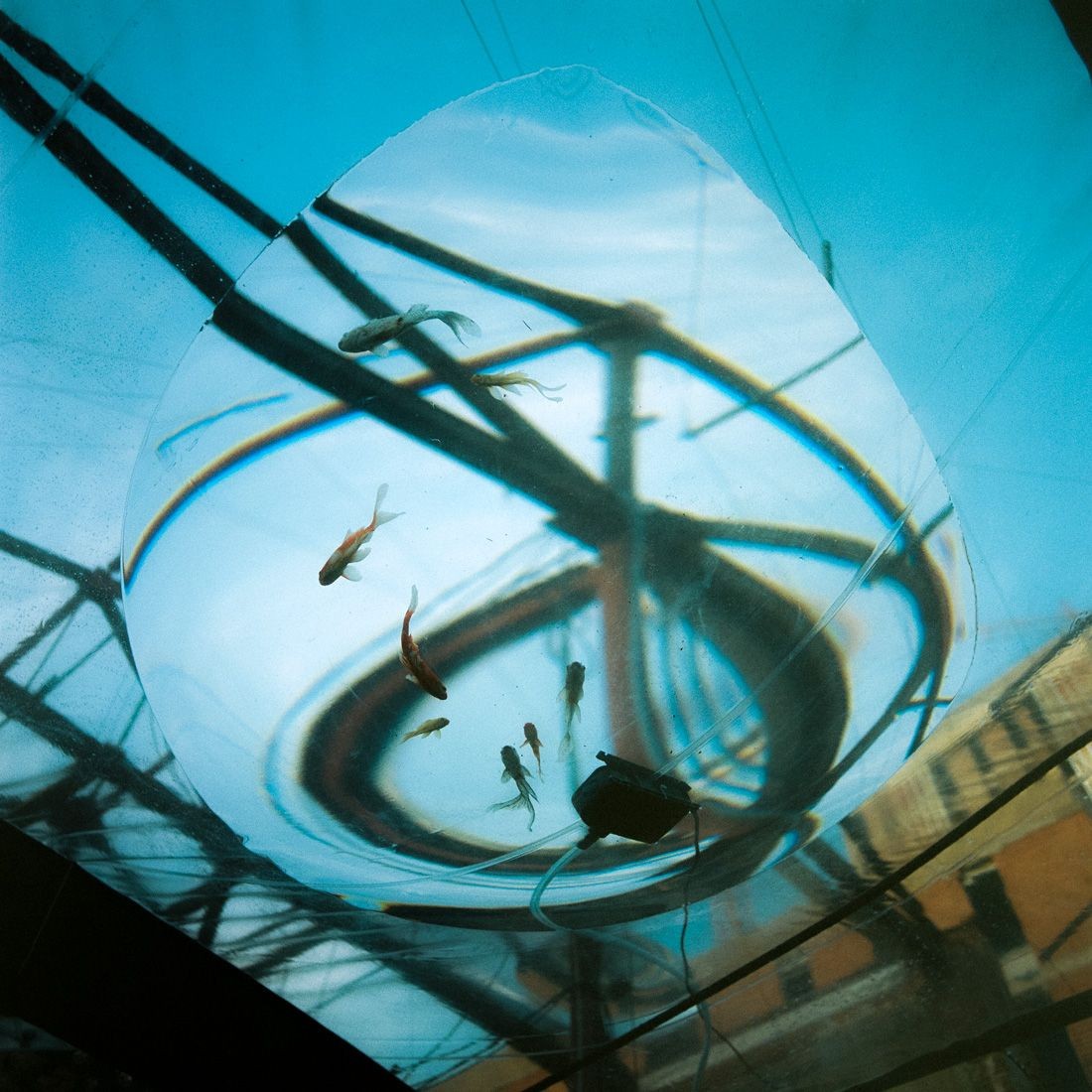Guillermo Santoma: Oικοσυστήματα στο μεταίχμιο αρχιτεκτονικής & design
DS.WRITER:
Σοφία Θρουβάλα
Κεντρική Εικόνα: Parainfrastructure, 2021 | Πηγή εικόνας: guillermosantoma.com
O Gulliermo Santomà είναι Καταλανός καλλιτέχνης και σχεδιαστής, γνωστός για τους χώρους τους οποίους δημιουργεί. Επικεντρώνεται κυρίως στην επανάχρηση και επαναξιοποίηση αντικειμένων. Δουλεύει σε διαφορετικά format και μεθόδους, καθώς κινείται ευέλικτα μεταξύ design, αρχιτεκτονικής, γλυπτικής και σκηνογραφίας, ενώ συχνά όλα τα παραπάνω μπλέκονται δημιουργικά σε ένα κοινό σώμα. Με αφορμή πάντα έναν απλό μηχανισμό ή μια δομή, αρχιτεκτονική, τεχνολογική, κατασκευαστική κ.ο.κ, η οποία συλλέγεται ή αξιοποιείται in situ, ο Σαντομά δημιουργεί πολύπλοκους χώρους-περιβάλλοντα προσβάσιμους στο κοινό, το οποίο καλείται να εγκλιματιστεί και να βιώσει καταστάσεις που επενδύονται με χρώματα, φώτα και μουσική.
Συγκεκριμένα, η δουλειά του Σαντομά χαρακτηρίζεται από το έντονο ενδιαφέρον του να επαναπροσδιορίσει και να συστηματοποιήσει εκ νέου υλικά, αντικείμενα, χρώματα και χώρους, κινούμενος από το ερώτημα: πώς θα μπορούσε ένας τέτοιος χώρος, ένα τέτοιο αντικείμενο, να λειτουργήσει σε μια κοινωνία αντιδράσεων και αλληλεπιδράσεων όπως η σημερινή; Ο Σαντομά τραβάει στα άκρα την έννοια της ταυτότητας, προσπαθώντας να δημιουργήσει περιβάλλοντα ικανά να φιλοξενήσουν αντικρουόμενες ομάδες σε έναν κατασκευασμένο χώρο. Θα μπορούσαν δυο εκ βάσεως -ιδεολογικά και πολιτικά- αντίθετα άτομα να καθίσουν στην ίδια καρέκλα;
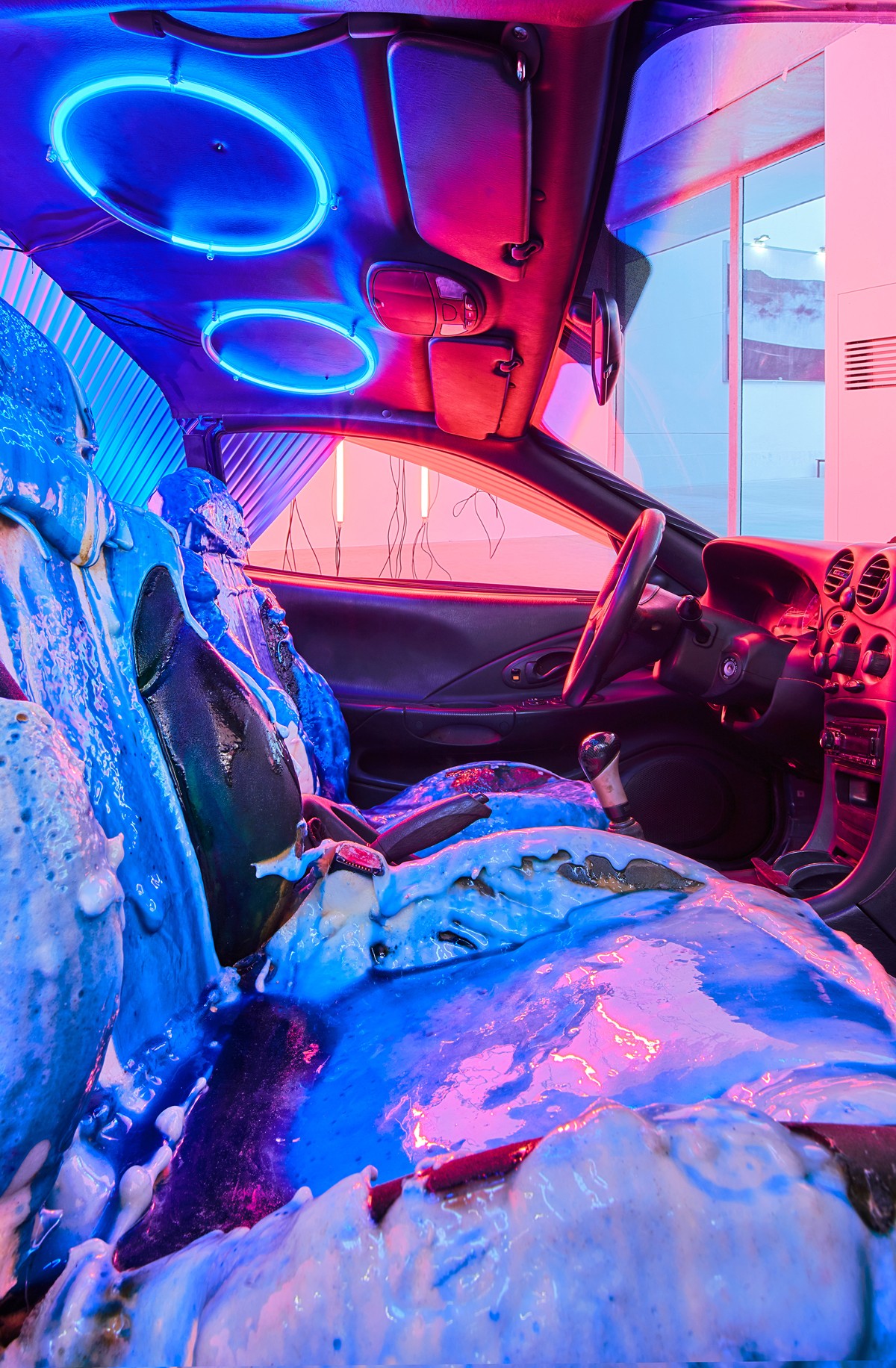
GAS, 2021 Spazio Maiochi, Kaledoscope Magazine | Πηγή εικόνας: guillermosantoma.com
Το 2019, ο Σαντομά σχεδιάζει για το Milan Design Week, σε συνεργασία με το studio RIMOWA και το περιοδικό σύγχρονης τέχνης KALEIDOSCOPE, μια πολυμεσική κατασκευή. Ένα αμάξι, καλυμμένο από το εμβληματικό RIMOWA αλουμίνιο, το οποίο μοιάζει να ακροβατεί μεταξύ λειτουργικού αντικειμένου και τέχνης. Η μέθοδος που ακολουθεί είναι η δημιουργία μέσω της καταστροφής, μέθοδος-κλειδί ώστε να μετουσιώσει οτιδήποτε επιθυμεί σε κάτι καινούριο. Εν προκειμένω, το αμάξι που χρησιμοποίησε ως πυρήνα του πρότζεκτ GAS, το οποίο παραμένει λειτουργικό, επενδύθηκε εξωτερικά με φύλλα αλουμινίου κρύβοντας ουσιαστικά το αμάξι και δημιουργώντας έτσι ένα νέο αντικείμενο, του οποίου η ταυτότητα είναι μη αναγνωρίσιμη. Η τοποθέτησή του στον χώρο μοιάζει σουρεαλιστική, καθώς μέσω της σκηνογραφίας ακυρώνονται τα λειτουργικά χαρακτηριστικά του οχήματος, δηλαδή η ασφάλεια και η ευελιξία. Τα καθίσματα επικαλύπτονται με μπλε εργοστασιακή μπογιά και ο χώρος εσωτερικά και εξωτερικά επενδύεται με έντονα φώτα, ενώ τέλος τα υπερμεγέθη ηχεία που είναι εγκατεστημένα στο εσωτερικό του αμαξιού γεμίζουν τον χώρο με μουσική, δημιουργώντας έτσι ένα πολυμορφικό αντικείμενο-γλυπτό, αναφορά βέβαια στο εμβληματικό έργο του ’63 του Ed Ruscha υπό τον τίτλο “Δεκαέξι Βενζινάδικα”, στο οποίο ο φωτογράφος γνωστοποιεί στο κοινό και επανανοηματοδοτεί το νέο αμερικανικό τοπίο με κεντρικό άξονα τα πρατήρια.
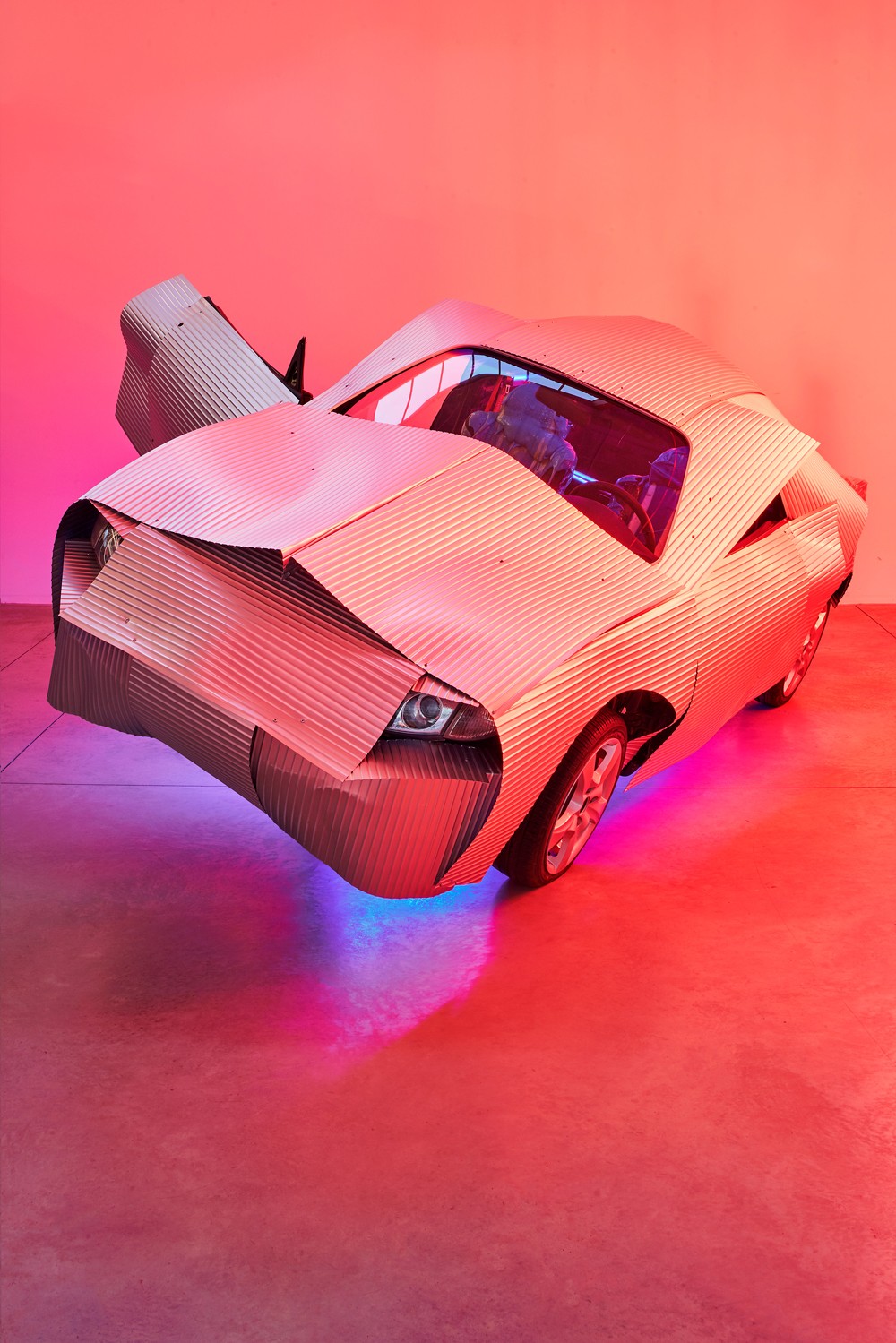
GAS, 2021, Spazio Maiochi, Kaledoscope Magazine | Πηγή εικόνας: guillermosantoma.com
Όλα τα παραπάνω χαρακτηριστικά και εμμονές μπορούν να ανιχνευθούν σε πολλά από τα επόμενα έργα του. Πιο συγκεκριμένα, τον περασμένο Οκτώβρη ο Σαντομά δημιούργησε μια εγκατάσταση στον εργοστασιακό χώρο του Matadero της Μαδρίτης, υπό τον τίτλο “pista de baile”. Ουσιαστικά μετασκεύασε ολοκληρωτικά τον χώρο σε ένα multimedia πάρτι. Η εγκατάσταση ήταν σε συνεργασία με τον Simon και το studio ProtoPixel, ενώ τέλος στην εγκατάσταση συμμετείχαν χορευτές σύγχρονου χορού της ομάδας Ciudad Bilar Exagerar. Η εγκατάσταση θέτει το ερώτημα αν μια κατασκευή σαν αυτή μπορεί να είναι αρχιτεκτονική, εφόσον στεγάζεται μέσα σε κάτι ήδη αρχιτεκτονημένο, ή αν τελικά είναι ένα διευρυμένο αντικείμενο design εντός του οποίου συμβαίνουν γεγονότα. Μπορεί τελικά ο κατασκευασμένος χώρος να είναι αντικείμενο; Μπορεί να είναι οικοσύστημα;
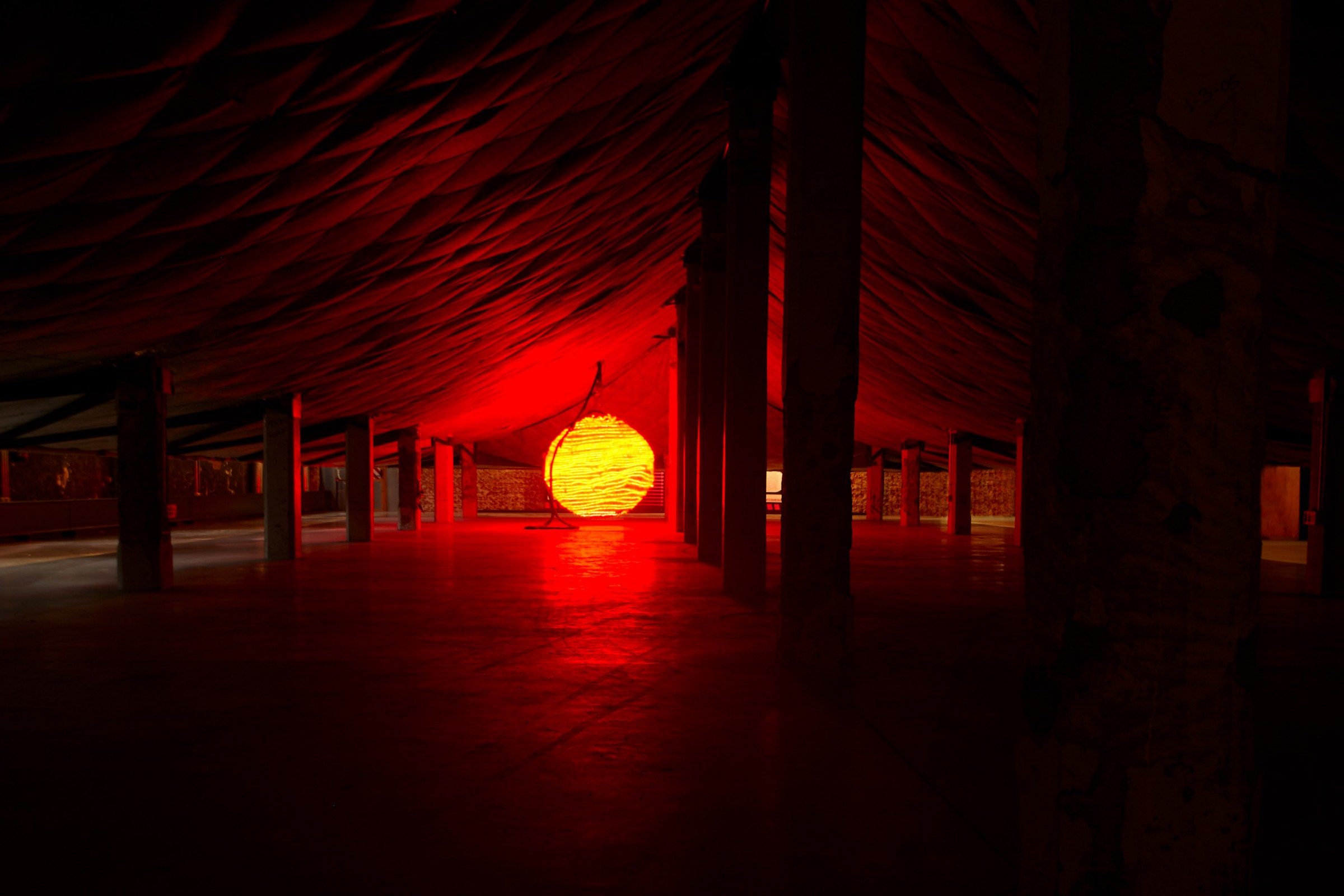
Matadero, Madrid, 2021 | Πηγή εικόνας: guillermosantoma.com
Ο ίδιος απαντά με την τελευταία του εγκατάσταση “para infrastructure” του ίδιου έτους. Σε ένα εργοστασιακό τοπίο, ο καλλιτέχνης χρησιμοποιεί τους εγκαταλελειμμένους τοίχους και δομικά στοιχεία για να δομήσει το δικό του σουρεαλιστικό οικοσύστημα. Συναντάμε ξανά τα στοιχεία της τεχνολογίας, του φυσικού και του κατασκευασμένου, του χώρου και της συμμετοχικότητας, χαρακτηριστικά που εναρμονίζονται σε ένα ενιαίο σκηνικό. Η ζελατίνη που καλύπτει όλο το μέρος του κατεστραμμένου κτιρίου χρησιμοποιείται ως ασπίδα προστασίας, ως νέα στέγη εντός της οποίας ζουν τώρα φυτά, ακόμα και ψάρια. Το στοιχείο της μουσικής και του pop φωτισμού είναι επίσης παρόν. Έτσι δημιουργείται μια παρα-δομή, κάτι που συνυπάρχει με κάτι άλλο στον χώρο. Μια μετατόπιση του ορατού σε κάτι παράλληλο και αόριστο, σε ένα οικοσύστημα.
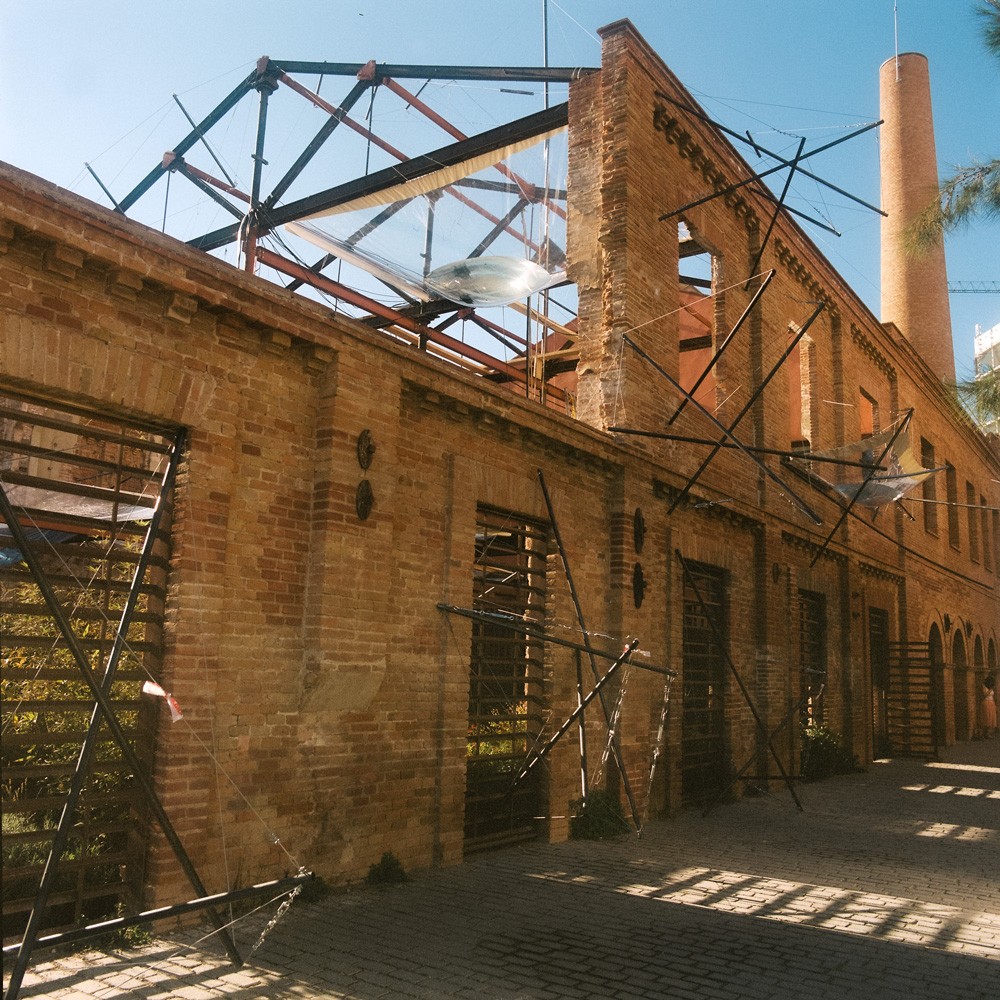
Parainfrastructure, 2021 | Πηγή εικόνας: guillermosantoma.com
Further reading:
https://icon.ink/articles/guillermo-santoma-solo-exhibition-madrid/
https://www.nytimes.com/2018/08/27/t-magazine/architect-guillermo-santoma-casa-horta-barcelona.html
http://www.etageprojects.com/guillermo-santoma/
https://www.rimowa.com/it/it/stories/article-SaloneDelMobile.html
http://www.guillermosantoma.com/parainfrasturcture
http://www.guillermosantoma.com/gas
http://www.guillermosantoma.com/matadero




